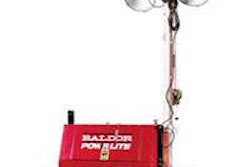Modern Math
By Kirk Landers
When it comes to dealing with problems, there’s the old fashioned way, and there’s the modern way.
Last month, Congressional leaders and the Bush Administration agreed that what America really needs now is an economic stimulus package. In case you missed it, news of economic difficulties finally reached the nation’s capitol in late January, startling lawmakers into action. Sort of.
The plan that everyone could agree on was a simple give-back to taxpayers. Those who paid less tax will get smaller checks, while those who paid more taxes will get bigger checks. Then all these tax payers will go on a buying binge in the second quarter, and the economy will surely shake off its doldrums and get back to the serious business of exporting jobs and importing everything else.
While this action was being debated, the Bush Administration issued its budget for the new fiscal year. One of the hallmarks of the budget was cuts in the transportation program, especially in the federal highway program.
Perhaps nothing better defines the difference between modern government and the old-fashioned approach to things prior to the new century than these two events.
In the old days, both political parties liked to rev up the economy with a combination of tax cuts and public works projects. The tax cuts would provide a short-term stimulus, while public works projects provided longer-term stimuli by generating jobs for American workers. By converting the unemployed and underemployed to fully employed citizens, the public works strategy created new economic ripples in the economy as workers and their families consumed more.
Nearly every cent of the public works investment went to American workers or to buy construction commodities like steel, concrete, asphalt, sand, gravel, and crushed rock that are primarily produced in the U.S.
As it happened, the public works projects were also important, by and large. They made roads safer, water cleaner, dams and levees more stable. They connected rural areas to centers of commerce, mitigated flooding, enhanced traffic flow, improved the efficiency of commercial trucking.
Modern wisdom is different. We still like the tax cut part, but public works is part of the great black hole of “government.” Any time we citizens combine our resources to solve a problem — such as congestion, or crumbling pavements, or outdated bridges — nothing good can come of it.
So we’re stuck in a rut. Rather than invest in infrastructure, we invest exclusively in consumerism. We have been doing this for so long it’s hard to imagine that it can continue to work. Indeed, the new $150-billion stimulus package is just a spit in the ocean compared to the stimuli our economy has gotten for the past seven years. Since the year 2000, our national debt has increased from about $5.7 trillion to $9.2 trillion — an average of a half-trillion dollars or so a year. How much impact can another $150 billion in debt have when all we’re supposed to do as citizens is go out and buy more stuff?
By the time the Bush Administration leaves town, we citizens will have taken on at least $4 trillion of debt to subsidize eight years of unchecked consumerism, and all we will have to show for it is thousands of miles of substandard roads, thousands of substandard bridges, an exhausted military, and a severely weakened currency.
If we had invested a fraction of that $4 trillion in making our country better we could have built important things, had just as much consumerism, and be saddled with a lot less debt. BR










